You won’t go home with a gobbler, if you’re hunting in a place that doesn’t hold one. You can wear the best quality camouflage, use outstanding turkey calls and employ all the tactics in turkey hunting videos and you still won’t go home with a gobbler if you’re hunting on land that doesn’t hold turkeys. To have a successful hunt, turkey scouting is is a must and for that, you need to know how to properly scout for turkey.

If you find the gobblers you want to hunt before the season, the chances of bagging a bird on opening morning will be much greater.
Chuck Jones, a longtime turkey hunter who has worked many years with Knight and Hale Game Calls and has hunted all over the country, explains, “If you really want to be successful, you need to locate more than one gobbler every day you’re afield.”
Jones today has to find and take turkeys every season for the table, but in years past, he also had to pinpoint gobblers for the videos Knight and Hale produced. His employers, not his ego, dictated this requirement. Although most hunters locate turkeys and hunt them for fun, if you want to learn how to find and take more turkeys this season, talk to someone like Chuck Jones with vast turkey hunting experience. Chuck’s tactics can help any gobbler chasers take their birds.
How the Pro Scouts
“When I plan to hunt a new location, I scout the area before turkey season opens,” Jones explains. “I learn what the turkeys eat and their daily movement patterns.”
When Jones is turkey scouting, he quickly covers as much ground as possible. He also identifies the locations of as many turkeys as he can each day he scouts. Jones knows that if he carries a turkey call with him on a scouting expedition, sooner or later, he’ll take that turkey call out of his pocket and call to a gobbling bird before the season.
“Regardless of your will power, if you have a turkey call in your pocket, vest or anywhere else on your body, you probably will pull it out of your pocket and use it,” Jones emphasizes. “Never use a turkey call when scouting for gobblers because you’ll educate the gobbler you want to take.”

To locate turkeys, stay low, crawl up to openings, look for the longbeards with your binoculars and don’t try to pinpoint them with turkey calls.
To solve this problem, Jones takes all his turkey calls out of his pack, vest and clothes before he leaves home. He’ll replace them with a variety of locator calls to learn a turkey’s movement patterns.
“I listen to turkeys gobble after they fly down off the roost to learn:
* “where they go;
* “why they go there;
* “where they strut;
* “where they feed;
* “where they loaf in the middle of the day; and
* “how they walk back to the roost.”
Jones uses a Knight & Hale Magnum Crow Turkey Locator Call, the Shock Gobble Owl Call, Screamin’ Hawk Call, the Pileated Woodpecker Call and the EZ-Howler Coyote Call as turkey locators. By blowing these calls while turkey scouting, he can make turkeys gobble and then determine their directions without the turkeys seeing him.
“Different calls will make turkeys gobble at various times of the day,” Jones says. “A turkey that won’t gobble to an owl call may gobble every time you blow a woodpecker call. A turkey that doesn’t answer a crow call may sound off each time you use a hawk call. A gobbler that won’t answer any of the other calls may gobble when you blow a coyote howler. By carrying a wide variety of locator calls with you, you can change calls until you discover one the turkey will answer.”
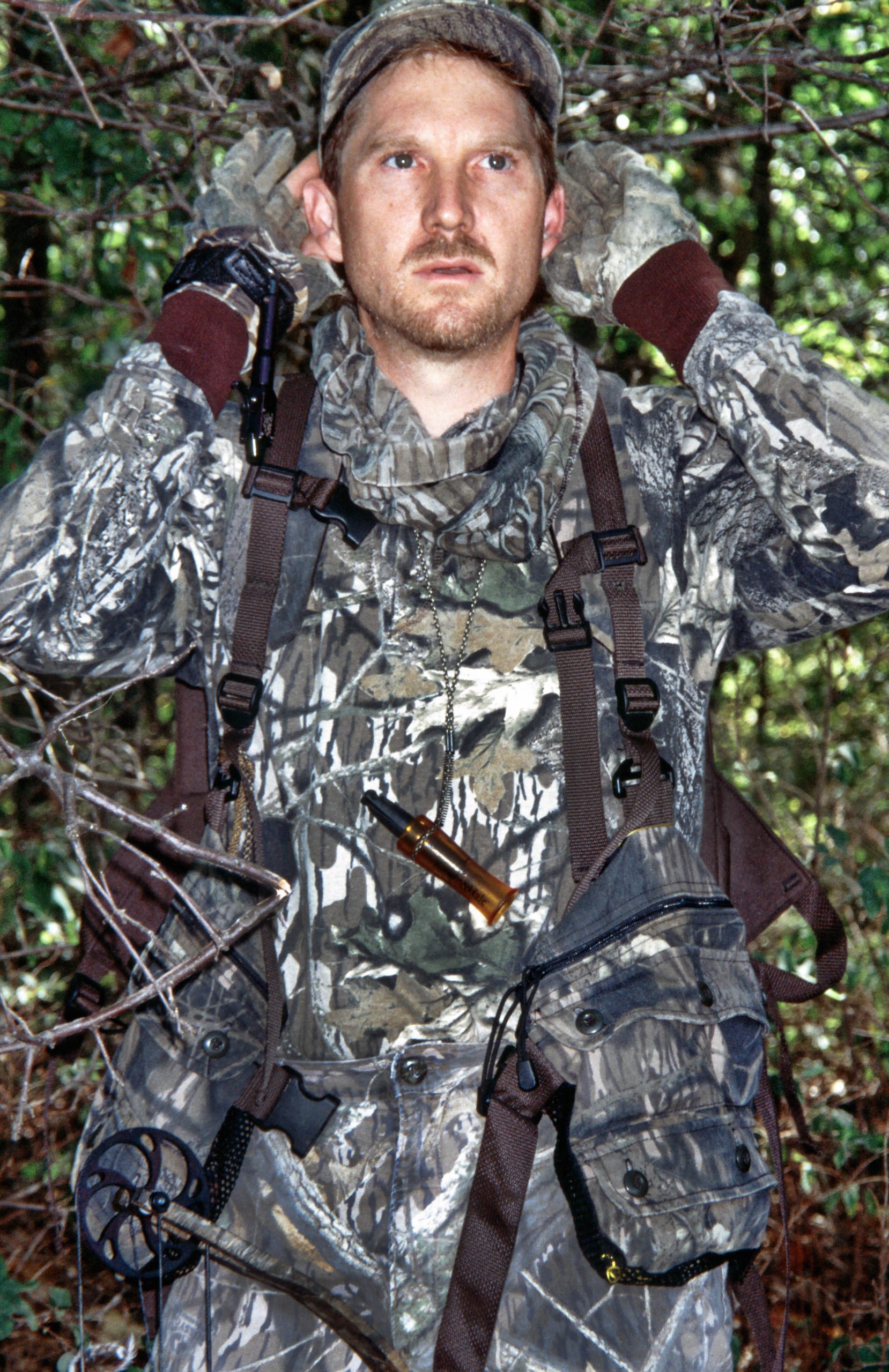
Do more scouting with your ears than you do with your mouth.
Jones says that to take a turkey, regardless of where you hunt, you must reach the gobbler’s destination before he arrives there. Often, you may not have to use a locator call once you discover the turkey’s route and learn his daily routine.
“Over the years, I’ve learned that when hunting hilly country, turkeys usually end up around the bottoms of the hills,” Jones mentions. “When I scout early in the morning, I’ll use locator calls from the ridge tops to find the turkeys in the bottoms.”
Turkeys frequent the fertile grounds below hills to search for young sprouts and insects. These areas stay cooler longer as the day progresses and generally have water near or in them.
“Also to find spring gobblers, you need to locate the hens,” Jones explains. “I look for hens at feeding sites and in fields.”
Gobbler Guide
Some years ago, Knight and Hale produced the “Knight and Hale Gobbler Guide,” a booklet available at www.knightandhale.com/field-notes/gobbler-guide. Jones, like many hunters, travels across the country during the spring to hunt turkeys. He refers to the “Gobbler Guide” to determine the best times to find turkeys in the state where he plans to hunt.
“Turkeys go through several transitions during turkey season in each state,” Jones comments.
“Knowing the transitions will help you determine how and where to locate gobblers in the state at that time.”
The “Gobbler Guide” splits the country into various zones and tells you how the turkeys will behave in each zone on each day of turkey season. The Guide also gives you the hunting strategies that will enable you to find and bag more gobblers in that state on that date.
“Using the ‘Gobbler Guide,’ helps me know if the gobblers will be with hens on the day I plan to hunt,” Jones explains. “I also can know what phase of the breeding season is in on the day I hunt. If, for instance, you know the gobblers have finished breeding on a particular day in the state you plan to hunt, you may not want to use aggressive hen calls. Once toms finish breeding, you won’t hear very much gobbling or hen calling. You may have to rely more on your hunting skills than on your calling skills.”
Using Locator Calls Before, During the Season
No matter how many calls you carry in the woods with you, you will always use your favorites. Although Jones takes all the Knight and Hale locator calls with him when he’s turkey scouting, he relies most heavily on his crow call, hawk call and owl call.

Leave all your turkey calls at home. However, you can owl hoot, crow call, use a pileated woodpecker call or a coyote howler to try to make a turkey shock gobble and give up his location before the season.
“I’ll use the Shock Gobble Owl Call on a roosted turkey and throughout the morning to locate gobblers,” Jones advises. “Once the turkey flies off the roost, I’ll rely on the Magnum Crow Call because turkeys hate crows. Crows seem to antagonize other types of wildlife. A male turkey in any state usually will gobble to a crow call when he hears it.”
When the crow call doesn’t work, Jones uses the Knight & Hale Screamin’ Hawk Call. “This hawk call makes a much higher pitch call like the Pileated Woodpecker Call does. These two calls work effectively when you hunt in areas where the turkeys have a lot of hunting pressure and don’t hear the hawk or the woodpecker call as much as they hear the owl and crow calls. The higher pitched hawk calls may cause a gobbler to speak when other calls won’t.”
Jones likes to use a Knight & Hale goose locator call in areas with intense hunting pressure, something most hunters never think of doing.
According to Jones, “The loud, high pitched goose call will make turkeys gobble when no other locator call can get the bird’s attention.”
The Knight & Hale EZ-Howler Coyote Call works best in the western states where sportsmen hunt Rio Grande or Merriam’s gobblers. The howler works most effectively just before or at daylight. However, because coyotes have expanded their ranges eastward, the coyote howler pays dividends for eastern hunters as well.
“When I either make a turkey gobble or hear one gobble on his own during the season, I’ll use my locator call to determine the turkey’s direction of travel to decide where I need to take a stand,” Jones reports. “I want to get out in front of the turkey before I set up and use hen calls. If I move ahead of the bird before I call to him, I increase my odds for bagging him.”
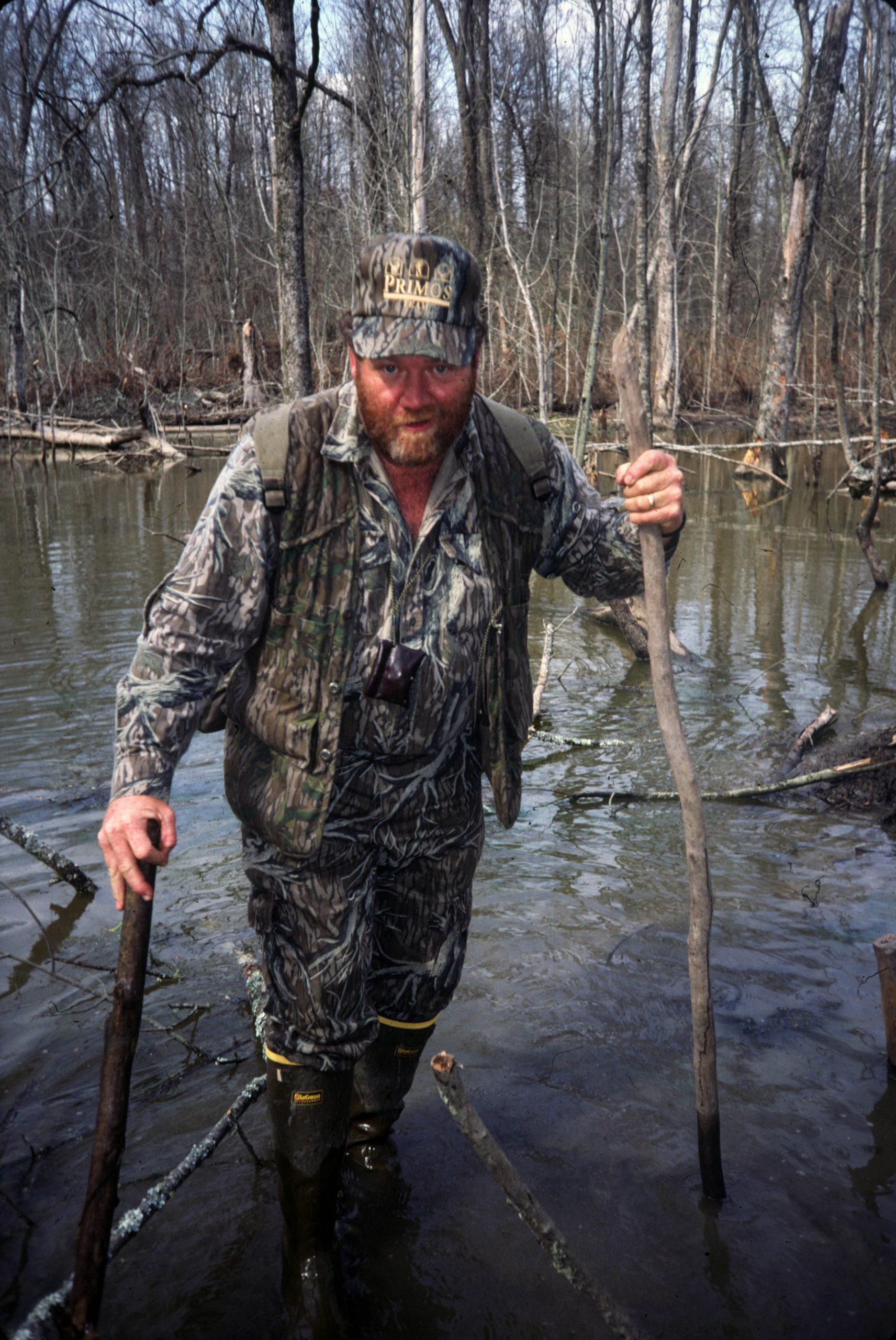
Cross whatever water you must cross and climb any mountains or hills to find the gobblers well before you start to try to call to them once the season arrives.
Once Jones knows the direction of the turkey’s movement, he’ll sneak ahead of the turkey and set up his hunting spot as closely as he can without the bird seeing him before he uses his hen calls. Locator calls enable Jones to stay in constant contact with the gobbler to pinpoint its position.
“By knowing the gobbler’s location and his speed of travel, I can determine better if I have time to cut limbs and bushes to make a natural blind or if I need to sit down quickly next to a big tree to hide my silhouette,” Jones says. “I never use my turkey calls to call the bird to me until I feel ready to take the shot.”
Hunting Spooked Gobblers
If you hunt turkeys long enough, you’ll eventually spook a tom you want to harvest. Jones says locator calls can play an important role in locating a spooked gobbler.
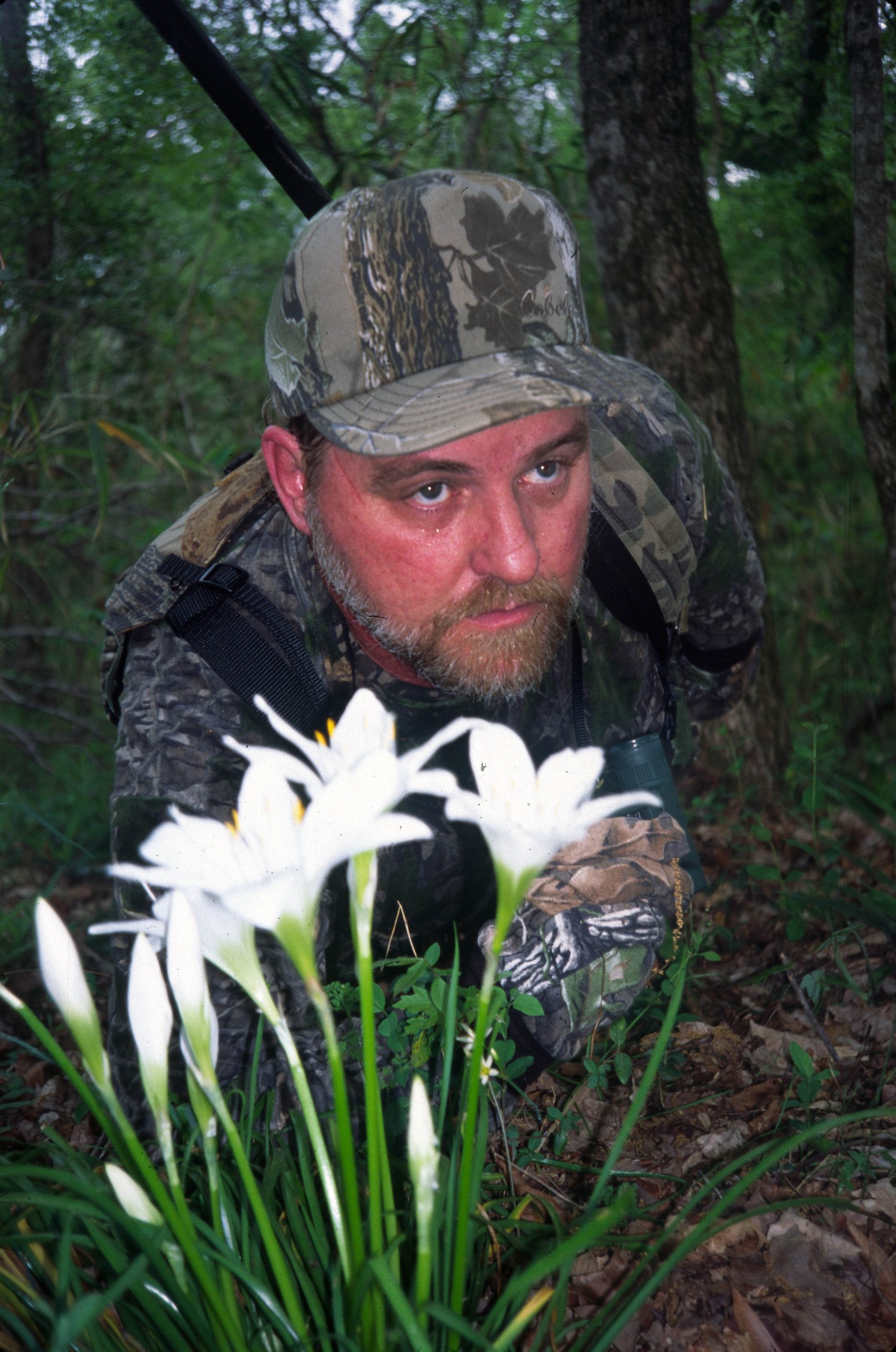
Before the season, if you see a hunter wearing camouflage who either has a big, brown, wide streak, a wide, green streak or mud on the front of his or her camo shirt, you’ll know that hunter has been out crawling and looking for turkeys.
“I’ll wait 30 minutes after I’ve spooked a gobbler before using several different types of locator calls to try and get him to respond. Once I learn which type of locator call he’ll respond to, I’ll use that same call and entice him to gobble three or four different times as I move to a location to call him to me.”
After Jones gets close to a tom, he sits down and readies for the shot before he gives any hen calls. “I’ll sit down beside a tree that’s wider than my shoulders to camouflage my silhouette and prepare to make the shot before I ever use a hen call. Then if I call a gobbler in to me, I can take him if he comes in on the run. When I share the woods with another hunter, I want to make sure a tree is between me and that other hunter before I start sounding like a turkey. Then I won’t get shot.”
Hunting Hush-Mouthed Toms
Although you may have done your turkey scouting, often you’ll call in gobbler that won’t come within gun range. Hens already may accompany that turkey, a predator may have spooked the gobbler, terrain may prevent the turkey from coming to you or the bird may have lost interest in your calling.
When one of these scenarios occurs, Jones suggests you, “Wait another hour before you move because many times a gobbler will come in silently. If you move, you’ll spook the turkey. However, if an hour passes with no sign of the bird, back out of that spot, go to a new area and use your locator calls to try to find another turkey.”
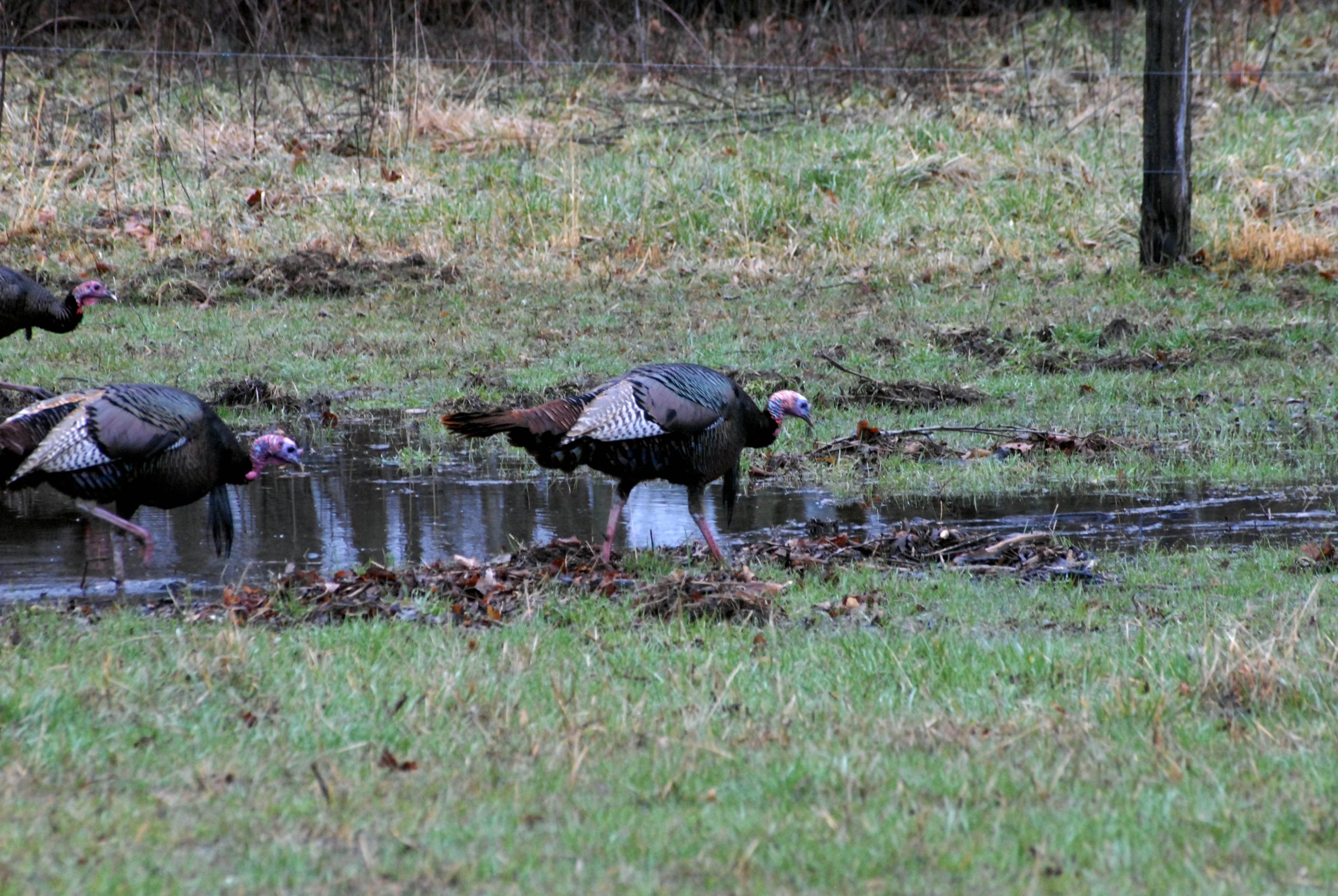
The more time you spend scouting for turkeys before the season, the less time you’ll have to spend trying to find turkeys once the season opens.
If another tom doesn’t answer after you’ve prospected for one with your locator calls for several hours, Jones recommends you return to the region where you’ve encountered the hush-mouthed gobbler. Find the bird with your locator calls, move to a different stand site closer to the bird and use a different style of turkey caller.
“I like to have several turkeys to hunt in any area where I plan to spend the day,” Jones mentions. “If for some reason the bird I’ve hunted that morning beats me, I can hunt another turkey and return to that same bird later that morning or at another time.”
How to Close the Deal with a Tom
After Jones does his turkey scouting, picks out his best stand and rests his shotgun on his knee, he often relies on friction calls. “Friction calls like slates sound more like a hen than any other type of call. Secondly, I like the hen call. I prefer to use either an ebony striker or a hickory striker on this call since these two strikers will give that raspy sound of an excited hen.”
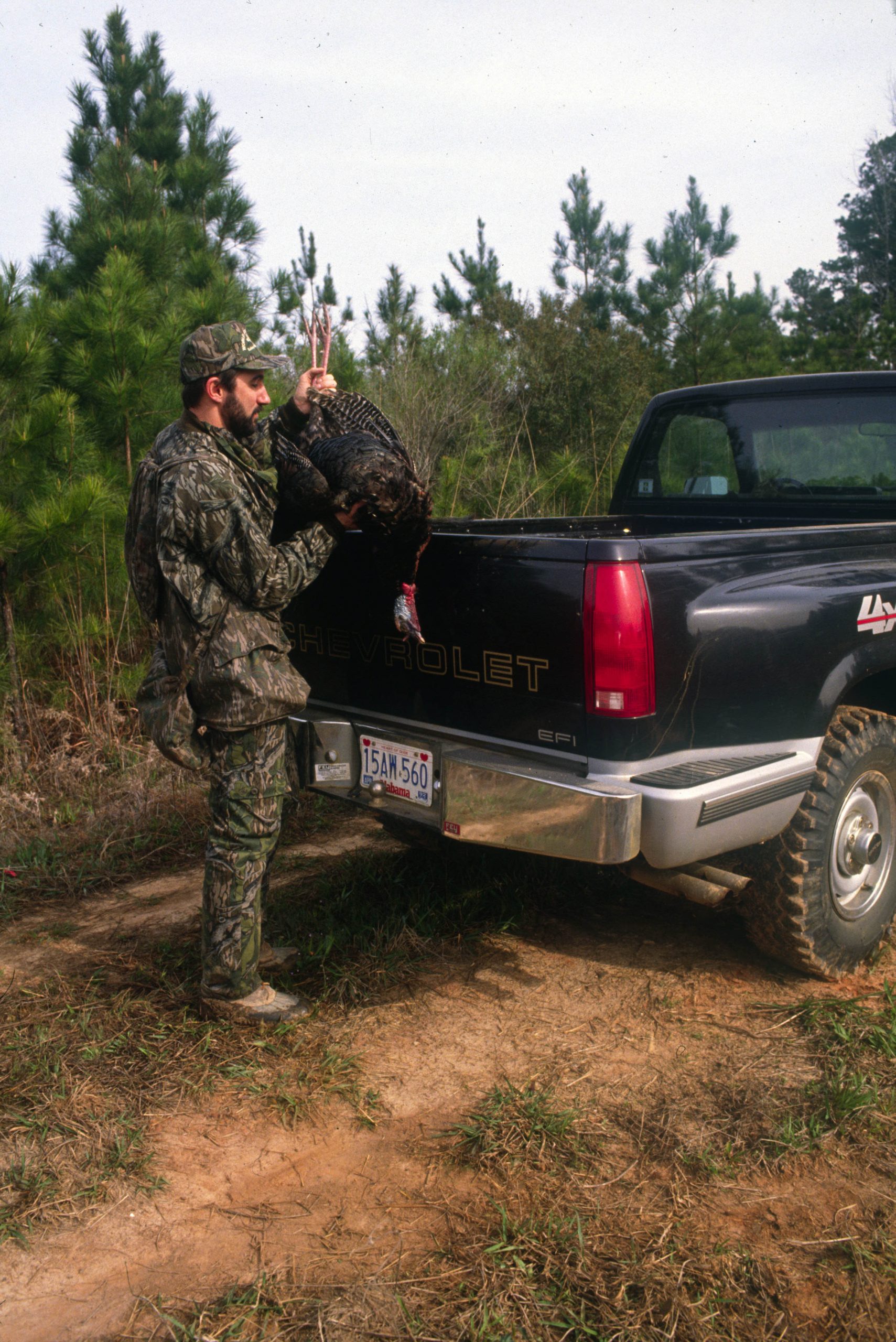
If you want a turkey to ride home in your vehicle, then find him before everyone else starts looking for him.
When Jones hunts turkeys that have experienced intense hunting pressure, he uses the hickory striker to call softly, especially when the turkey comes in close to him. “To take a tough gobbler, use a locator call. Set up on him and call lightly on a friction call with soft clucks and purrs. No hunter should go in the woods without several different types of locator calls. To find the gobblers, you must know how to use a locator call.”
By effectively using a locator call, you can reduce the amount of time you spend turkey scouting and determine where and how to set up to increase your odds for bagging a gobbler. According to Jones, “I won’t go into the spring turkey woods without a locator call.”
More Info on Turkey Scouting

For more info on turkey scouting and hunting, check out John E. Phillips’ books, available in Kindle and some also in print and Audible (http://johninthewild.com/books#turkey). To receive and download for free “The Turkey Gobbler Getter Manuel,” by John and Denise Phillips, go to http://johninthewild.com/free-books.
This article first appeared in the March 2017 print issue of Great Days Outdoors Magazine. For more great hunting and fishing content for the deep South, subscribe to Great Days Outdoors print and digital editions or click the image to download this issue.

